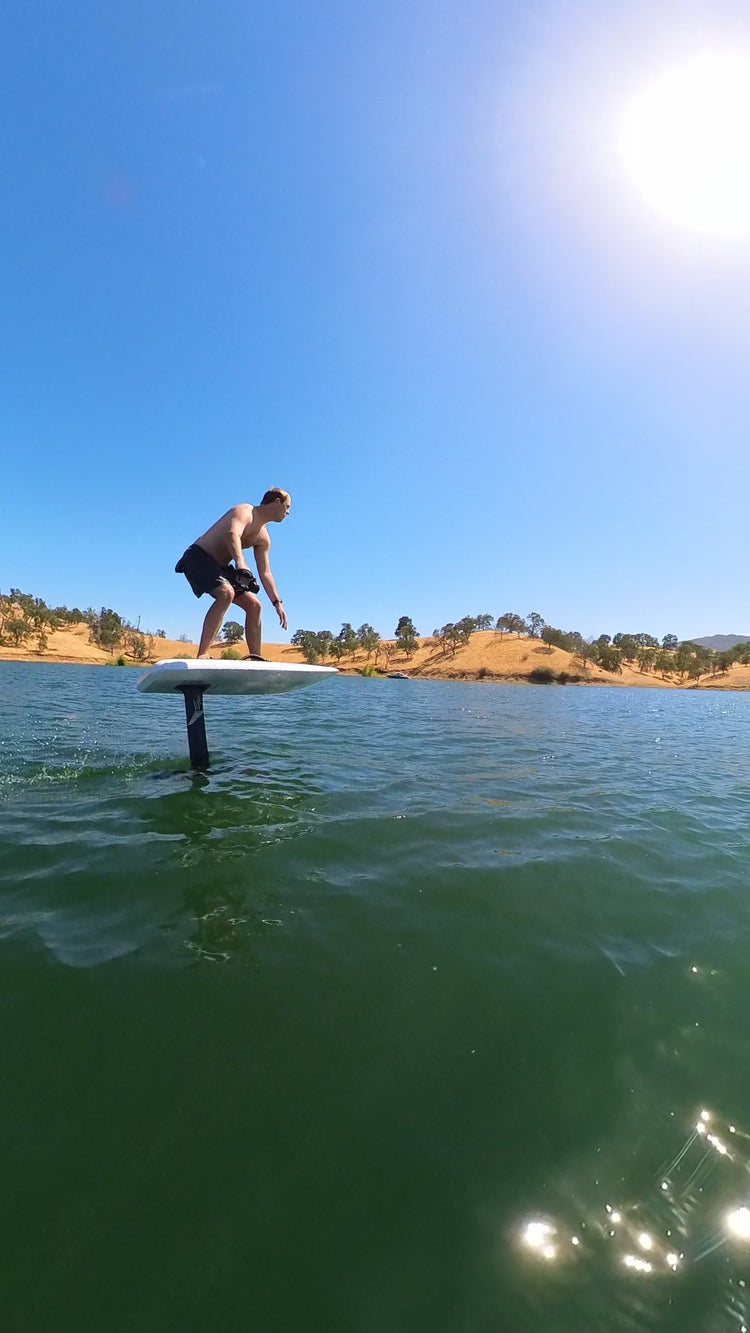
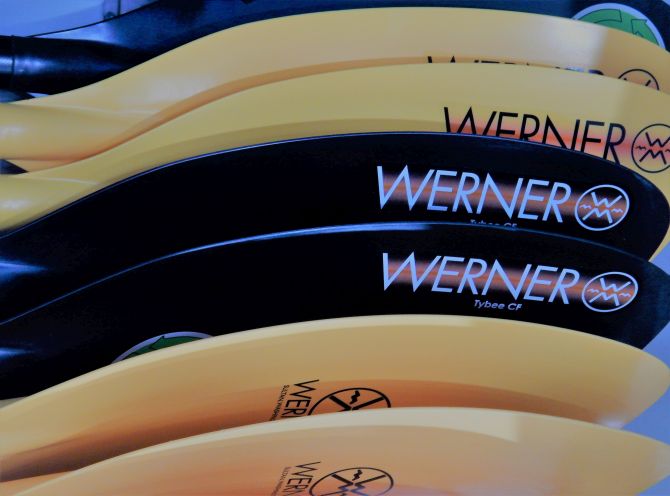
At 101 Surf Sports, we take a great deal of pride in outfitting you with the the right equipment for the type of paddling you want to do. Choosing the right paddle to use with your kayak is critically important to enjoying your paddling. We're always happy to help you, in store or on the phone if you are shopping online, but here are some things to think about before buying your kayak paddle.
Not all kayak paddles are the same and we're not just talking about the color! Put simply, a kayak paddle is made of four parts: a shaft, typically with a joint in the middle and two blades at each end. Paddle length, shaft size, shaft construction, blade size, blade shape, blade construction, overall weight, swing weight, paddle joint, feather angle and indexing are are important features of paddle design.
When choosing a kayak paddle, you should ask yourself the following questions:
- What type of kayak will you be using - sit-on-top, or sit-inside?
- How wide is your kayak?
- How high is your seat above the water?
- How tall are you (how long is your torso, how long are your arms)?
- How fast is your kayak?
- Do you typically paddle for fitness, or at a more leisurely pace?
- How long is your typical outing - less than two hours, all day, multi-day?
- Do you paddle on flat water, or do you play in rough water and surf?
- Do you have a low or high angle stroke? The angle of your stroke is explained below.
- Do you have any injuries or other physical limitations that might affect your choice of kayak paddle.
- What is your budget?
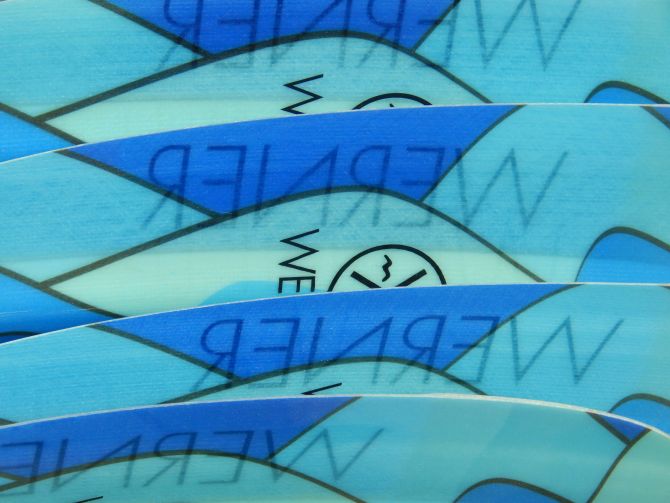
Let's dig into some of those questions here and how they relate to the features of the paddle.
Paddle Length / Blade Size & Shape
Paddle length, blade size and shape are determined by a ratio of many variables, including:
1. How wide your kayak is - the wider your kayak, the longer your paddle will need to be so that you can reach the water!
2. How high above the water do you sit? The higher your seat, the longer the paddle you will need. Do you need a longer paddle for stability? Just like a tightrope walker uses a pole for balance, a longer paddle and a larger blade size will give your more stability and will assist you when bracing for support and provide more leverage if performing an eskimo roll.
3. How fast you wish to paddle, the duration of your typical outing and the nature of the water you paddle on will factor into paddle length and blade size. Think of paddle length and blade size as similar to the gearing on a bicycle. The longer the paddle, the bigger the size of the blades, the bigger the 'gear' you are paddling with. If you like to paddle fast, for fitness, for no more than a couple of hours, you will typically want a slightly longer paddler with larger blades. If you like to go on longer excursions, at a more relaxed pace, you should choose a slightly shorter paddle and more importantly a smaller blade size.
4. How long are your levers? The taller you are the longer the paddle you will feel comfortable with. More accurately, it is the length of your torso, the width of your shoulders and the length of your arms that determine how long a paddle you need. A quick guide is to hold the paddle with an overhand grip with your hands equidistant from each paddle blade. Place the paddle shaft on your head and ask a friend to look at the angle of your elbows. They should be plus or minus 90 degrees. This is a biomechanical phenomena - your body is set up so that you are strongest doing a push up, a pull up or pulling on a paddle when your elbows are set at something close to ninety degrees.
5. Remember that we are NOT trying to pull the paddle blade through the water with our arms. Just like a rower, we are trying to fix the blade in the water and drive the kayak past the blade with our body and legs. Except that we go forwards, not backwards which is a much better idea! So the size of the kayak blade just needs to be big enough to give us sufficient 'grip' on the water to fix the blade and not slip when we drive the kayak forward with our body and legs. Too small a blade area and we will feel the blade slip through the water and we will see lots of bubbles. Too large a blade area and we are just making hard work for ourselves lifting that large blade with each paddle stroke. A large blade can also be really hard work when paddling into a headwind.
6. The need to accelerate quickly will determine the size of the blade we should use and the length of the paddle shaft. An example of this is if we are paddling in rough water and surf where the desire to accelerate the kayak in just a few strokes to catch a wave means that we should have a larger blade size and a shorter paddle length. That will allow us to produce a series of rapid and powerful strokes to produce a burst of speed. You will typically be using a HIGH ANGLE forward stroke technique to produce the maximum amount of power in this environment and so you should choose a HIGH ANGLE blade shape. This blade shape produces an aggressive catch or grip on the water. The Werner Shuna and Tybee are examples of high angle blade designs.
7. If your paddling is more relaxed, you will typically paddle with a LOW ANGLE forward stroke technique and so you can choose a LOW ANGLE blade shape which will give a softer feel to the catch. This blade shape is a good choice for injury prevention. The Werner Camano and Skagit are examples of low angle blade designs.
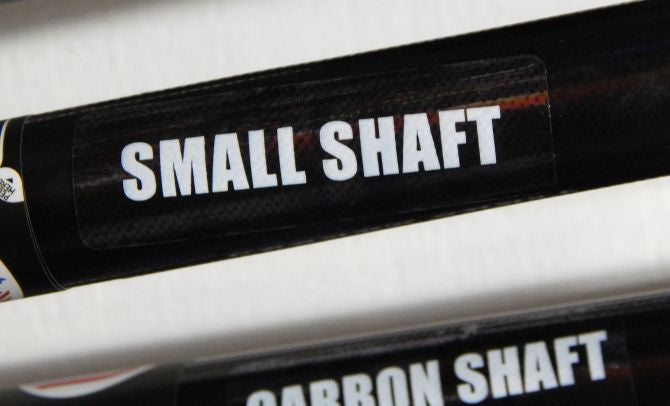
Paddle Shaft Diamater
An excellent option offered by Werner Paddles is the Small Shaft. Not everyone's hands are the same size and if you have smaller hands you will appreciate the small shaft option and will help reduce fatigue in your hands and forearms. This is especially true if you typically wear gloves to protect your hands from cold, sun or blisters.
Construction
If you have spent any time in our store or read any of our blog posts on construction you will know that we have a healthy obsession with Carbon. Yes, we LOVE Carbon because it has a coefficient of restitution that is four times faster than fiberglass, meaning you get more of your power transferred to the blade of the paddle where it matters. We also LOVE carbon because it is light and the weight of a paddle makes all the difference to your enjoyment of your paddling. Remember that your kayak is supported by the water but your paddle is being held up by you. While having a light kayak is good for lots of reasons, having a light paddle is EVEN MORE important. There really is no downside to having a light paddle. Quite simply, you should buy the lightest paddle that you can afford. All Werner Paddles have a Carbon shaft.
Something else to think about is the swing weight of the paddle. The overall weight of the paddle is important, but the weight of the blades if even more critical because that determines the swing weight of the paddle. Because the paddle is constantly moving (rotating) as you paddle, the lower the swing weight, the less effort it will require from you to move the paddle. A lighter paddle means less fatigue, faster strokes and more fun!
The lightest blades in Werner's range are the carbon Shuna and Camano, then the fiberglass Shuna and Camano, followed by the plastic injection molded Tybee CF and Skagit CF with a Carbon insert, in the blade and lastly the Tybee and Skagit with a fiberglass insert. Even Werner's heaviest and thus most affordable paddles, the Tybee FG and Skagit FG are lighter than many brands most expensive options!
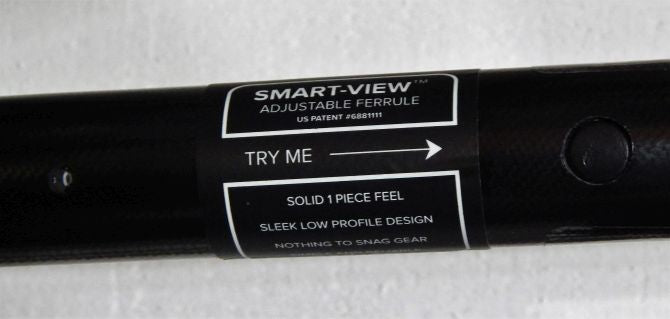
Paddle Joint / Feather / Indexing
The Smart-View Adjustable Ferrule is unique to Werner Paddles and is, in our opinion, a masterpeice of engineering and the best paddle joint on the market. There is no movement in the joint, you can set the paddle at right, left or no feather and the feather angle can be set within 15 degree increments. We have tested this joint in exteme conditions and it is bomber. With some simple, common-sense maintenance this paddle joint will provide hassle free service for a lifetime.
What is paddle feather? Feather describes the offset between the right and the left blade. Historically, an offset of 90 degrees feather was introduced to kayak paddles to make it easier to paddle into a head wind. Ninety degree feather is far too much feather to be comfortable for most paddlers and can cause wrist and shoulder problems. For most novice paddlers, having no offset or zero degrees feather is fine to start with. As you grow in experience and expertise you may start to notice that the angle of your paddle blades to the water might need to be adjusted. You typically want your paddle blade to be perpendicular to your direction of travel so that you get the maximum grip or catch on the water. The degree of feather that you need is determined by the height of your top hand. If you have an efficient high angle stroke, with your top hand around eye level, you will benefit from something close to 60 degrees feather. If you have a low angle stroke you will need less feather. To determine the right feather angle for you we strongly encourage you to obtain some personal coaching from one of our kayak instructors. We utilize video analysis to examine your stroke and help you maximize efficiency and avoid injury.
A quality kayak paddle shaft will be indexed or ovalized in the area where you hold the paddle. This allows you to have more control over the angle of the blade and a more secure grip on the paddle. The indexing should be subtle and not too aggressive, but sufficient that you can still feel it even when wearing gloves.
Wing Paddles
Wing paddles provide the ultimate in paddle performance in terms of the catch and power from each forward stroke. We will discuss wing paddles in the next article.

